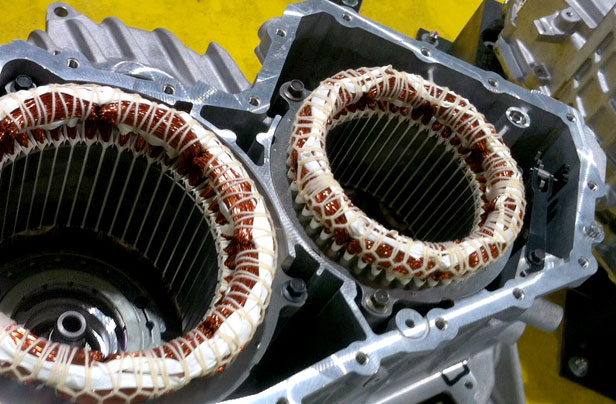Carmakers Find Ways to Make Cheaper Hybrids

As automakers work to comply with fuel-economy standards, they’re increasingly turning to hybrids. Last week, for example, Toyota announced that it would make 21 hybrid models by 2015, up from 12 now (see “Toyota Scales Back Electric Vehicle Plans” and “Stringent CAFE Standards Push Automakers”). Automakers have grown more enthusiastic about hybrids because the cost of making them has plummeted. Several years ago, Toyota’s Prius hybrid cost the consumer about $6,000 more than an equivalent conventional car—and even at that price, the company was losing money on every one it sold. The difference is now $2,500, and the car is profitable, says Mike Omotoso, an analyst with LMC Automotive. The drop in cost is due to an accumulation of incremental technology improvements, along with economies of scale. And advances going forward—better batteries, electric motors, and power electronics and transmissions—could cut costs by another 50 percent.
At Toyota, for example, the company shifted from a 500-volt electrical system to a 650-volt one, a decision that produced “a host of benefits,” says Justin Ward, advanced power-train program manager at the Toyota Technical Center. The company was able to reduce the cost and weight of copper wiring, use cheaper power transistors in the electronics that control the hybrid system, and make the electric motor cheaper and smaller.
Although other automakers have shifted to lithium-ion batteries, Toyota has stayed with nickel-metal hydride. But it’s made improvements to these batteries, such as shifting from cylindrical cells to flat ones to save space and modifying the cases to improve battery cooling. Simple changes like moving connectors from one side of a circuit board to the other can have big implications in terms of manufacturing, Ward says, making it possible, for example, to replace a worker with a robot for an assembly step.
All hybrid manufacturers have had to cope with the rising costs of rare-earth metals, which are used in the compact, highly efficient motors that propel hybrids in conjunction with their gasoline engines. So Toyota and other major automakers are redesigning their motors either to not need rare earths or to use far less of them.
Ford has helped develop motors that halve the required amount of dysprosium—the most expensive rare-earth material in its motors, used in part to give the magnets resistance to heat. Ford developed a better motor cooling system, which lessened the need for dysprosium. Simultaneously, its supplier, Hitachi, developed a better process for diffusing the material through a magnet, also allowing the use of less of it. This and other advances have helped Ford lower hybrid costs by about 30 percent.
Even as Toyota is increasing the number of its hybrid models, GM is dropping its conventional hybrids in favor of the much cheaper (and less fuel-efficient) eAssist vehicles—hybrids that use a motor together with a small battery that allows the engine to turn off whenever the car comes to a stop.
Keep Reading
Most Popular
Large language models can do jaw-dropping things. But nobody knows exactly why.
And that's a problem. Figuring it out is one of the biggest scientific puzzles of our time and a crucial step towards controlling more powerful future models.
The problem with plug-in hybrids? Their drivers.
Plug-in hybrids are often sold as a transition to EVs, but new data from Europe shows we’re still underestimating the emissions they produce.
How scientists traced a mysterious covid case back to six toilets
When wastewater surveillance turns into a hunt for a single infected individual, the ethics get tricky.
Google DeepMind’s new generative model makes Super Mario–like games from scratch
Genie learns how to control games by watching hours and hours of video. It could help train next-gen robots too.
Stay connected
Get the latest updates from
MIT Technology Review
Discover special offers, top stories, upcoming events, and more.